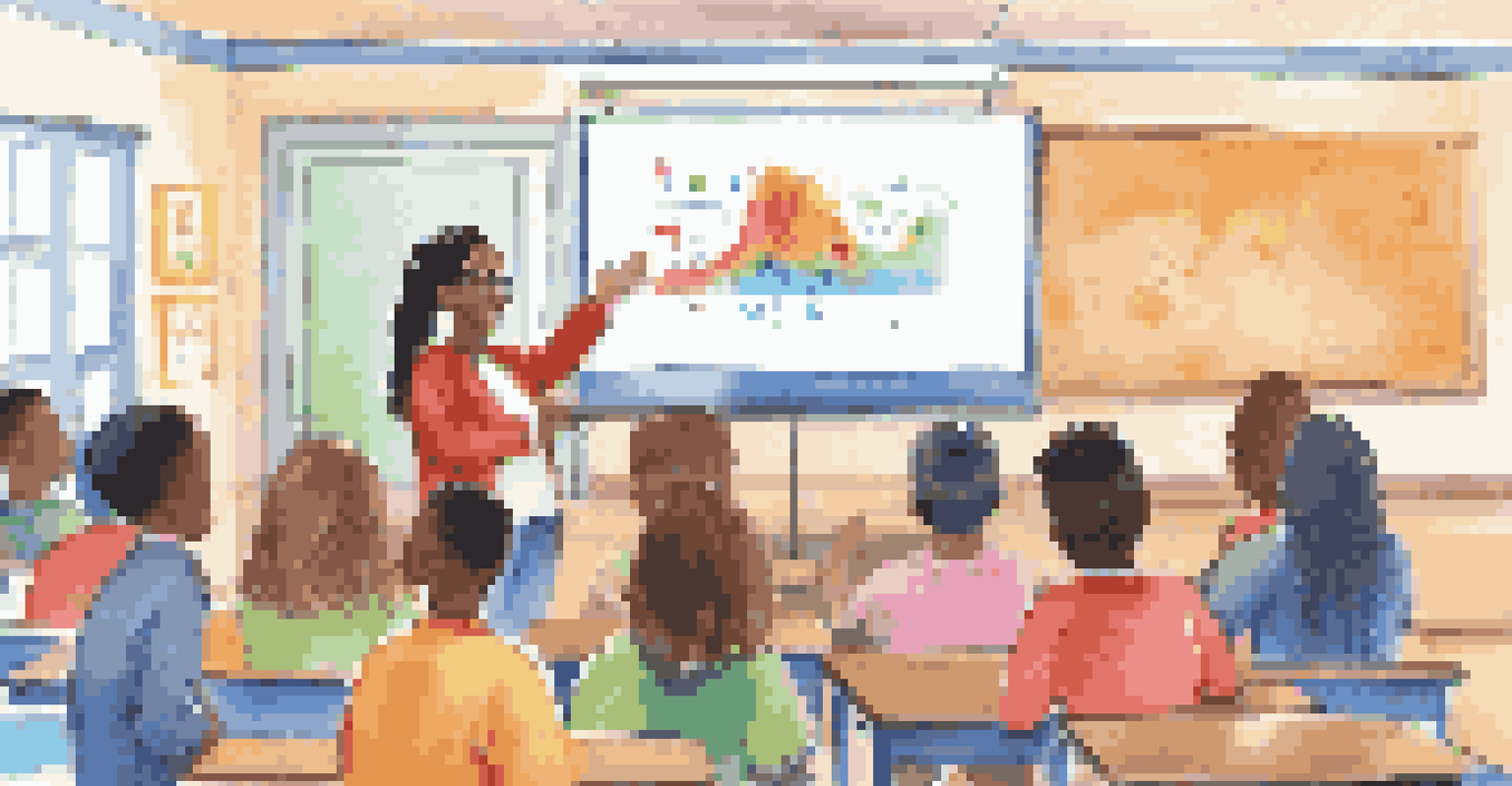Digital Literacy and Social Justice: Promoting Equal Access

Understanding Digital Literacy and Its Importance
Digital literacy refers to the skills needed to effectively navigate the digital world. This includes everything from basic computer skills to understanding online safety. As our lives become increasingly intertwined with technology, digital literacy is essential for participation in today's society.
In a world that is increasingly driven by technology, digital literacy is no longer optional; it is essential for participation in society.
Without these skills, individuals risk being left behind, unable to access information, job opportunities, or essential services. Imagine trying to apply for a job online without knowing how to create a resume or fill out an application. This gap can lead to significant disparities in employment and education.
Thus, fostering digital literacy is not just about teaching technology; it’s about empowering individuals to take control of their lives and futures. This empowerment is crucial in promoting social justice, as it helps level the playing field for marginalized communities.
The Role of Social Justice in Digital Literacy
Social justice focuses on ensuring equal rights and opportunities for all individuals, regardless of their background. When it comes to digital literacy, this means addressing the barriers that prevent certain groups from gaining access to technology and the skills needed to use it effectively. For example, low-income families may not have the resources to purchase devices or pay for internet access.

Additionally, systemic inequalities can exacerbate the digital divide. Communities that already face challenges, such as inadequate education systems or lack of infrastructure, are often the same ones struggling with digital literacy. This creates a cycle where those already at a disadvantage find it increasingly difficult to improve their circumstances.
Digital Literacy Empowers Individuals
Digital literacy equips people with essential skills to navigate technology, ensuring they can access information and job opportunities.
Promoting social justice in digital literacy involves advocating for policies and programs that provide access to technology and training. It’s about creating opportunities for everyone, regardless of their socio-economic status, to thrive in a digital world.
Barriers to Digital Literacy in Marginalized Communities
Despite the importance of digital literacy, numerous barriers exist that disproportionately affect marginalized communities. These barriers can be financial, such as the inability to afford devices or internet service. For many, paying for a home internet connection feels like a luxury they cannot afford.
Access to technology is a basic human right. Without it, we are left behind in the digital age.
Moreover, there are also educational barriers. Not everyone has the same access to quality education or resources that teach digital skills. For instance, schools in underfunded areas may lack the necessary technology or trained staff to provide students with essential digital skills.
Cultural factors can also play a significant role in hindering digital literacy. Language barriers, for example, can make it difficult for non-native speakers to access online resources or understand instructions. Recognizing and addressing these barriers is crucial for fostering equity in digital literacy.
The Importance of Community Programs
Community programs play a vital role in bridging the digital divide and promoting digital literacy. These programs can provide free access to technology, training, and resources for individuals who might not otherwise have the opportunity. Local libraries and community centers often serve as hubs for such initiatives, offering workshops and classes on digital skills.
For example, a local library might host a series of workshops designed to teach seniors how to use smartphones and navigate social media. These programs not only enhance skills but also foster a sense of community and belonging, helping to combat social isolation.
Social Justice Requires Digital Access
Addressing the barriers to digital literacy is crucial for promoting equal rights and opportunities, particularly for marginalized communities.
Investing in community programs is essential for promoting social justice. By providing equitable access to digital literacy resources, we empower individuals to improve their lives and contribute positively to society.
The Role of Schools in Promoting Digital Literacy
Schools are critical in shaping the future of digital literacy for the next generation. By integrating digital literacy into the curriculum, educators can equip students with the skills they need to succeed in a technology-driven world. This includes teaching not only how to use devices but also how to think critically about digital content.
However, many schools face challenges, including a lack of funding and resources. This can lead to disparities in the quality of digital education provided. Schools in affluent areas may have access to the latest technology, while those in lower-income neighborhoods struggle to keep up.
To promote social justice, it is crucial to ensure that all students receive a robust digital education. This can be achieved through initiatives that support schools in underserved areas, providing them with the resources they need to teach digital literacy effectively.
Advocating for Policy Change
Advocating for policy changes that support digital literacy and access is essential in promoting social justice. Policymakers need to recognize the importance of digital skills in today’s economy and invest in programs that provide training and resources for all communities. This includes funding for broadband access in underserved areas, ensuring that everyone has the tools they need to thrive.
For instance, initiatives that support free or subsidized internet access can significantly reduce the barriers faced by low-income families. Additionally, policies that fund digital literacy training in schools and community centers can help equip individuals with skills that are increasingly necessary for employment.
Community Programs Bridge the Gap
Local initiatives provide vital resources and training, helping to enhance digital skills and foster community engagement.
By pushing for these changes, advocates can help create a more equitable society where everyone has the opportunity to succeed in the digital age. It’s about ensuring that no one is left behind in an increasingly digital world.
The Future of Digital Literacy and Social Justice
Looking ahead, the relationship between digital literacy and social justice will only become more important. As technology continues to evolve, the skills required to navigate the digital landscape will change as well. It’s crucial that we prioritize ongoing education and training to keep pace with these changes.
Moreover, the conversation around digital literacy must expand to include discussions about data privacy, cybersecurity, and digital citizenship. Understanding these issues is essential for individuals to protect themselves and make informed decisions in the digital world.

Ultimately, promoting digital literacy is about more than just access to technology; it’s about fostering a society where everyone can engage, participate, and thrive. By working together, we can create a future where digital literacy is a fundamental right for all.